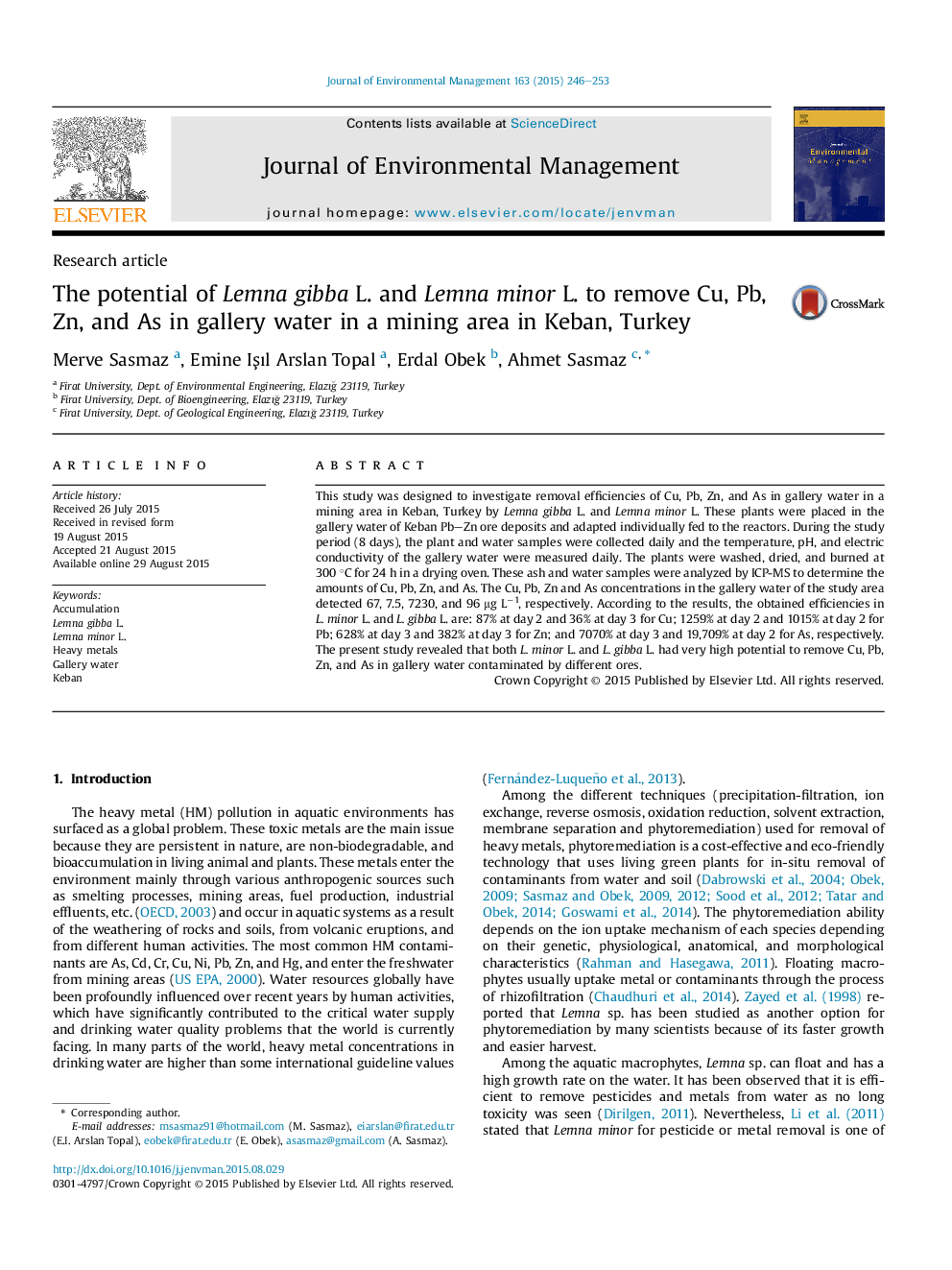| Article ID | Journal | Published Year | Pages | File Type |
|---|---|---|---|---|
| 1055532 | Journal of Environmental Management | 2015 | 8 Pages |
•We investigated Cu, Pb, Zn and As accumulations in gallery water using aquatic plants.•We calculated the phytoremediation potential of L. gibba L. and L. minor L..•These plants showed very high performances to accumulate Cu, Pb, Zn and As.•It was detected the optimal harvesting time of these plants for Cu, Pb, Zn and As.
This study was designed to investigate removal efficiencies of Cu, Pb, Zn, and As in gallery water in a mining area in Keban, Turkey by Lemna gibba L. and Lemna minor L. These plants were placed in the gallery water of Keban Pb–Zn ore deposits and adapted individually fed to the reactors. During the study period (8 days), the plant and water samples were collected daily and the temperature, pH, and electric conductivity of the gallery water were measured daily. The plants were washed, dried, and burned at 300 °C for 24 h in a drying oven. These ash and water samples were analyzed by ICP-MS to determine the amounts of Cu, Pb, Zn, and As. The Cu, Pb, Zn and As concentrations in the gallery water of the study area detected 67, 7.5, 7230, and 96 μg L−1, respectively. According to the results, the obtained efficiencies in L. minor L. and L. gibba L. are: 87% at day 2 and 36% at day 3 for Cu; 1259% at day 2 and 1015% at day 2 for Pb; 628% at day 3 and 382% at day 3 for Zn; and 7070% at day 3 and 19,709% at day 2 for As, respectively. The present study revealed that both L. minor L. and L. gibba L. had very high potential to remove Cu, Pb, Zn, and As in gallery water contaminated by different ores.
